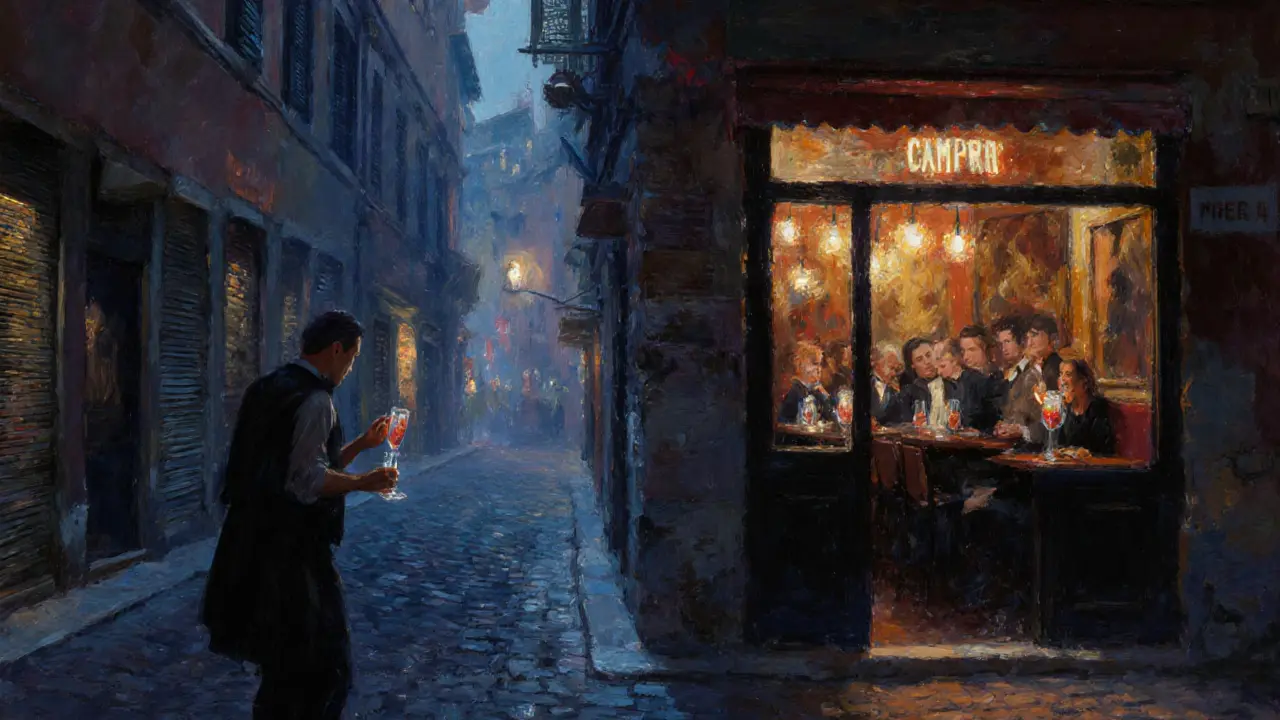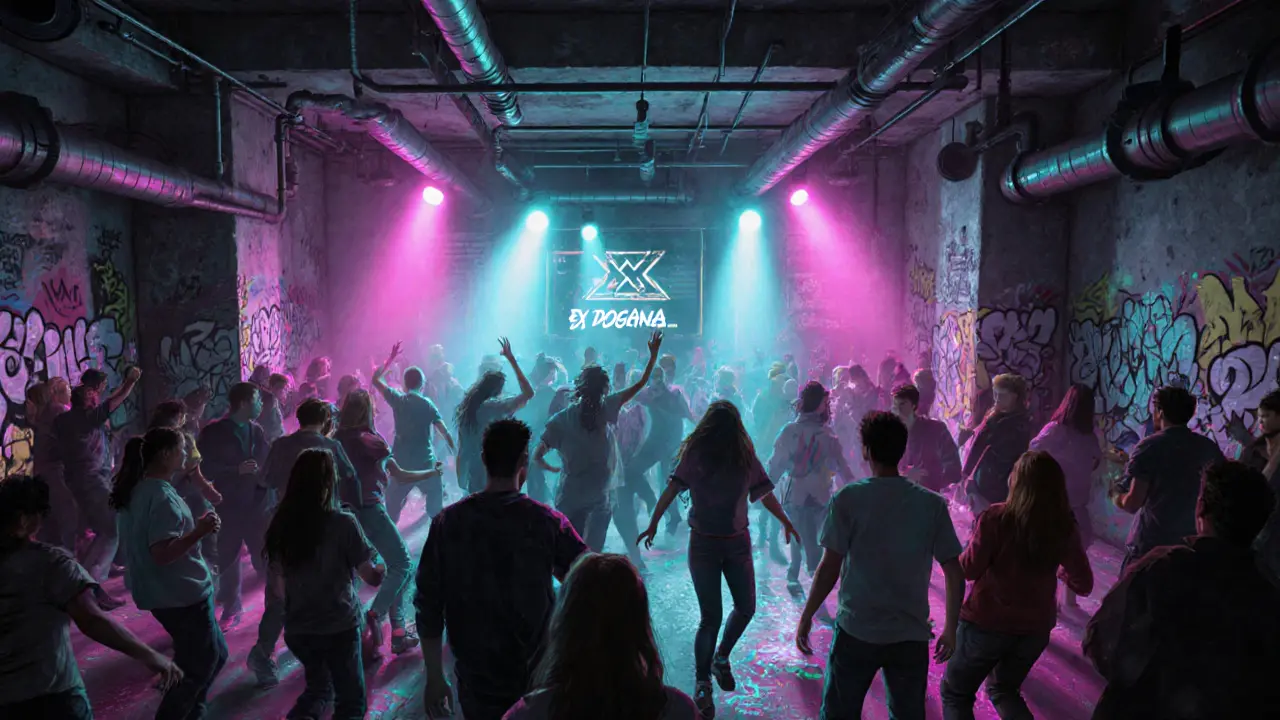When the sun sets over Milan, the city doesn’t wind down-it switches gears. Forget the daytime bustle of fashion shows and designer boutiques. At night, Milan becomes something else entirely: a pulsing, stylish, effortlessly cool playground for locals and visitors who know where to look. This isn’t just about drinking. It’s about the rhythm of the city after hours, the way the lights catch on the canals of Navigli, the hum of conversation in a hidden speakeasy, the bass dropping in a basement club that doesn’t even have a sign. If you’re wondering where to start, here’s where the real Milan comes alive.
Start in Navigli: The Canals That Come Alive
Don’t miss Navigli. It’s not just a district-it’s the soul of Milan’s nighttime scene. Two canals, lined with old brick warehouses turned into bars, restaurants, and live music spots, stretch south from the city center. On Friday and Saturday nights, the sidewalks fill with people sipping Aperol spritzes, laughing over plates of cicchetti, and dancing to live jazz or indie rock. The best part? You don’t need a reservation. Just wander. Look for Bar Basso, where the Negroni was invented in 1945. It’s still the gold standard. Or try La Cucina di Naviglio for a more casual vibe with great wine and local cheeses. If you’re looking for a place to dance, La Cerva plays everything from disco to house, and the crowd is a mix of artists, students, and expats who’ve lived here long enough to know the real deal.
Brera: Where the Crowd Is Sophisticated
Brera feels like a secret only the city’s insiders know. Narrow cobblestone streets, art galleries shuttered for the night, and tiny wine bars tucked between historic buildings. This is where Milan’s creatives, designers, and intellectuals unwind. Skip the tourist traps near the Brera Art Gallery. Instead, head to Bar Basso’s quieter cousin, Il Baretto, where the bartender knows your name by the third visit. Order a Campari soda with a twist of orange. The lighting is dim, the music is soft jazz, and the conversation flows like the wine. If you want to move to something louder, La Baita has live piano and a loyal local following. No tourists here-just people who’ve been coming for years because it never changes, and it never disappoints.
Porta Venezia: The Wild, Diverse Heartbeat
If you want variety, go to Porta Venezia. This neighborhood doesn’t have one vibe-it has ten. One bar might be a queer-friendly drag lounge with glitter and karaoke. The next could be a Japanese whiskey bar with a 50-bottle selection. Then there’s the Cuban salsa club, the vegan tapas spot, and the underground techno warehouse that only opens after midnight. Bar Basso doesn’t belong here, but Il Covo does. It’s a tiny, unmarked door on Via Melzo that leads to a basement where DJs spin rare vinyl from the 80s and 90s. The crowd is young, loud, and unapologetic. If you’re looking for something different, try La Cucina di Mamma-a retro Italian diner that turns into a disco at 11 p.m. with a live DJ and neon lights. No pretense. Just fun.

Corso Como: The Glamour Spot
Corso Como isn’t for everyone. But if you’re dressed up and want to see-and be seen-this is your place. The street is lined with high-end boutiques, design stores, and luxury hotels. At night, it becomes a runway for Milan’s fashion crowd. Corso Como 10 is the epicenter: a members-only club, bar, and art space that feels like a private party in a modernist villa. You can’t just walk in. But if you’re with someone who knows the owner, or if you’re staying at the adjacent hotel, you might get lucky. The drinks are expensive, the music is curated electronic, and the crowd is polished. It’s less about dancing and more about being part of the scene. If you’re not in the inner circle, try Bar Luce-a cozy spot designed by Wes Anderson, where you can sip a gin and tonic next to a velvet couch and watch the world go by.
Zone 1: The Underground Beats
For real nightlife, skip the glossy clubs and head to Zone 1. Not the city center-this is the industrial edge of Milan, near the train yards and old factories. This is where the city’s most experimental music happens. Ex Dogana is a former customs warehouse turned into a multi-room club that hosts everything from ambient techno to punk rock. The walls are concrete, the floor is sticky, and the sound system is loud enough to rattle your ribs. It’s not glamorous. It’s not safe for your ears. But it’s authentic. The crowd here is made up of students, musicians, and people who’ve been coming since the 90s. They don’t care about the dress code. They care about the music. If you’re into electronic, go on a Thursday. If you like rock, come on a Saturday. There’s no cover charge before midnight. And if you’re lucky, you’ll catch a local band playing their first show.

When to Go and What to Wear
Milan doesn’t rush. Dinner doesn’t start until 9 p.m. Bars don’t fill up until 11. Clubs don’t really get going until 1 a.m. Plan accordingly. If you show up at 9 p.m. expecting a packed club, you’ll be the only one there. And the dress code? It’s real. In Brera and Corso Como, no sneakers. No hoodies. Think tailored jeans, a nice shirt, maybe a blazer. In Navigli and Porta Venezia, it’s more relaxed-jeans and a cool jacket are fine. In Zone 1? Wear what you want. The only rule: don’t look like you’re trying too hard. Milanese people notice. They can tell if you’re faking it.
What Not to Do
Don’t go to the tourist bars near Duomo. They’re overpriced, loud, and filled with people who don’t know the difference between a Negroni and a mojito. Don’t expect to find American-style clubs with bottle service and bouncers checking IDs at the door. Milan doesn’t do that. Don’t try to force your way into exclusive spots without an invite. You’ll get turned away. And don’t assume everyone speaks English. Learn a few phrases: “Un aperitivo, per favore”, “Quanto costa?”, “Dove si balla qui?”. It goes a long way.
Final Tip: The Aperitivo Ritual
Don’t skip the aperitivo. It’s not just a drink-it’s a ritual. Between 6 and 9 p.m., most bars offer a drink (usually a spritz, gin and tonic, or wine) with a buffet of snacks: olives, cheese, mini sandwiches, arancini, even pasta. It’s included in the price. In Navigli, you can spend €12 and eat like you’re at a restaurant. In Brera, it’s more refined-small plates, artisanal bread. In Porta Venezia, it’s wild-everything from sushi to falafel. This is when locals gather. This is when you’ll meet people who’ll tell you where the real party is. Don’t rush it. Sit. Drink. Eat. Watch. And when the night really starts, you’ll know exactly where to go.
What time do clubs in Milan usually open?
Most clubs in Milan don’t get busy until after midnight. Bars start filling up around 11 p.m., but the real energy kicks in between 1 a.m. and 2 a.m. If you show up at 10 p.m., you’ll likely be the only one there. Locals don’t start their nights until after dinner, which usually ends around 10:30 p.m.
Is there a dress code in Milan’s nightlife spots?
Yes, and it varies by neighborhood. In Brera and Corso Como, dress smart-casual: no sneakers, no hoodies, no shorts. Jeans with a button-down or nice top work. In Navigli and Porta Venezia, it’s more relaxed-clean jeans and a stylish jacket are fine. In underground spots like Ex Dogana, you can wear whatever you want. The key is looking intentional, not sloppy.
Are there any free or low-cost nightlife options in Milan?
Absolutely. The aperitivo is your best friend-€10-15 gets you a drink and a full buffet. Many bars in Navigli and Porta Venezia host free live music on weeknights. Ex Dogana doesn’t charge cover before midnight. Some smaller jazz spots in Brera have no cover charge at all. The key is timing: go early, before the crowds arrive, and you’ll find the best deals.
Can I find English-speaking staff in Milan’s bars and clubs?
In tourist-heavy areas like near the Duomo, yes. But in the real nightlife spots-Navigli, Brera, Porta Venezia, Zone 1-staff often speak limited English. Don’t worry. Most bartenders know the standard drink names. Learn a few Italian phrases like “Un aperitivo, per favore” or “Quanto costa?” and you’ll be fine. Locals appreciate the effort.
Is Milan’s nightlife safe at night?
Generally, yes. Milan is one of Italy’s safest major cities at night. Stick to well-lit areas like Navigli, Brera, and Corso Como. Avoid walking alone in empty industrial zones after 2 a.m., even if you’re heading to a club. Use Uber or Bolt if you’re tired. Most bars close by 3 a.m., and the metro runs until 1:30 a.m. on weekends. Always keep your belongings close.

